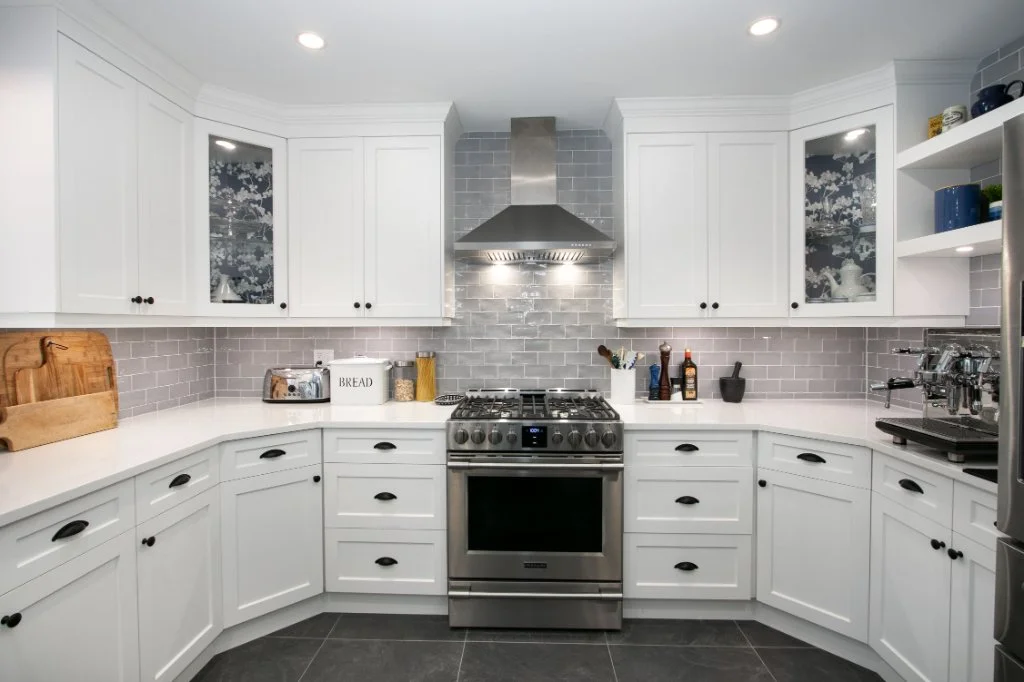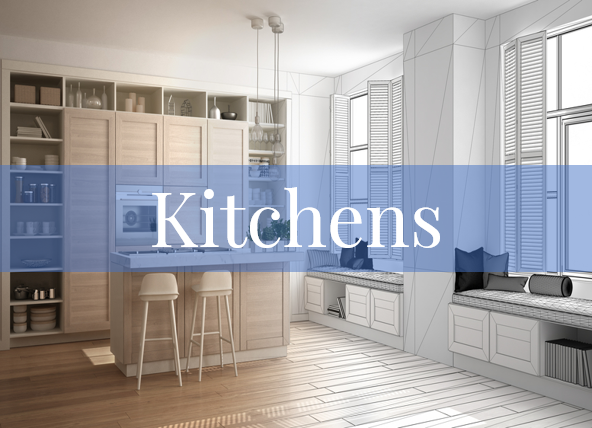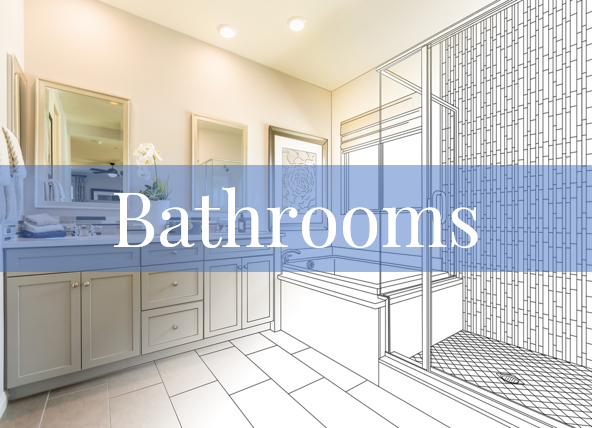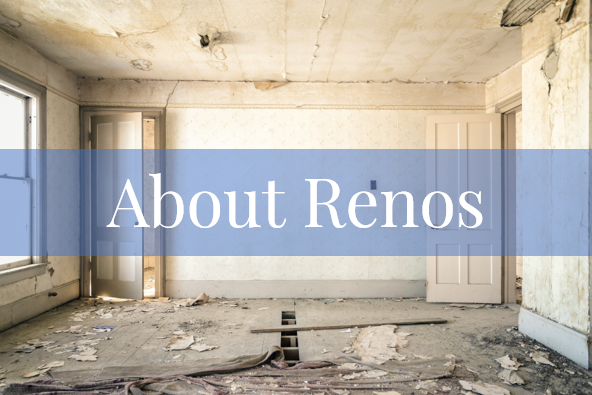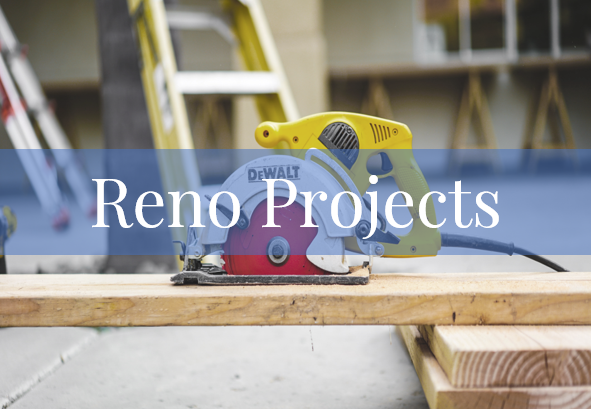Kitchen Cabinet Refacing: Is It an Option You Should Consider?
/You want a new kitchen but you don't want to spend a lot of money. You know that the dated honey oak 1990s kitchen has to go, but how can you afford a completely brand new kitchen? Cabinet refacing might be the solution you're looking for. We'll explain exactly what cabinet refacing is, talk about the pros and cons and help you decide whether it's a good option for your kitchen.
The information in this blog post comes from 17 years of personal experience designing kitchens for our clients, and a talk I had with our in-house cabinet maker for more insight into refacing cabinets.
Prefer to listen?
What is cabinet refacing?
Although replacing all of your kitchen cabinets and starting with everything brand new is always the preferred option, sometimes it's not necessary, and often it can cost much more than the budget you have to work with.
Essentially, cabinet refacing involves removing the cabinet doors and drawer fronts and replacing them with new ones. It also includes applying a new veneer over the existing surface of exposed gables, side panels or the backs of islands. It usually includes new hinges and knobs or pulls. What it doesn't include is new shells or carcasses of the kitchen cabinets.
When is it the right option?
There are a couple of precursors to selecting this as an option. The important thing is that the shells of your kitchen cabinets must be in excellent condition. This means they are free of stains, no warping, no broken frames, no peeling, divots or damage to the interior or exterior of the shells. Most importantly, is that the shelves inside of the cabinets are level, flat and not bulging or sagging.
Although you can still reface kitchen cabinets that have base shells that are not in good condition, believe me when I say, that once everything else is brand-new in your kitchen and you go to open up those kitchen cabinets the first time and see yellowed, stained or damaged carcasses, you will regret selecting this option as a cost-cutting measure. There's nothing worse than everything else being brand new when the insides look old, worn and broken.
What I recommend doing is locate the kitchen cabinet that you think might be the one that is in the worst condition. Take everything out of it and then have a good long look at what the inside of the cabinet shell looks like. Are there stains, damage, warping? Take a 2 ft. level and place it on top of the cabinet and shelves. Do you see a bulge? Are the shelves flat and level? This will be a good test to let you know if the cabinet carcasses are worth keeping.
Another thing to consider is what colour your new kitchen cabinets are going to be. We did a refacing for a client who had off-white kitchen cabinets. Her cabinet carcasses were white. She planned on replacing the door fronts and drawer fronts with white. Resurfacing was a great option. Because her existing cabinet carcasses were already white and still in great condition, putting new white doors and drawer fronts meant a lot of surfaces didn't have to have a new veneer coating.
Another very important consideration is whether the existing layout of your kitchen works for you. If you absolutely hate where the sink is and the stove next to that wall just doesn't work for you, can you live with keeping the same layout? If not, refacing may not be the best option.
Also, if you don't have any pot drawers or perhaps a blind corner and you'd prefer a lazy Susan, new cabinet carcasses will be required. The best time to consider refacing as an option is if your existing kitchen layout is staying exactly the same as it is right now.
What about changing just some of the cabinets?
Another option that some clients have asked me about is whether they can just replace some of the cabinets. The short answer is yes, but the long answer is, I wouldn't always recommend it.
Now let me clarify my response. If all of your cabinets are in good shape but you had a leak at your kitchen sink and therefore the sink base is the only cabinet you need to replace, then go ahead and reface the rest of the cabinets and just replace the sink base. However, if you're thinking of replacing two or three or four cabinets and your existing cabinets are more than 20 years old, it may not be worth refacing.
Cabinets today are made very differently than they were 20-plus years ago. One of our clients wanted to remove two cabinets to the right of her stove and replace them with deep pot drawers. There were also two additional cabinets that she wanted to replace with drawers on the opposite side of the kitchen. She also wanted a broom closet next to the fridge.
This created two problems. First, when her beautiful new kitchen was all done and she went to fill her cabinets with her pot, pans etc., it was very obvious which ones were old and which ones were new. You couldn't tell until you opened the door of the cabinet, but our client was very disappointed they didn't just replace all them so that all of the cabinets were brand new and looked the same.
We also had a problem when it was time to install the countertop. Once the new countertop went on, we suddenly realized that the fronts of the new cabinets were finished differently than the fronts of the old cabinets. There were areas where you could see bare wood on the old cabinets because of the way the countertop had been installed. We were able to rectify everything and it looks fabulous now, but honestly it was a nightmare. We absorbed the cost of all the extras ourselves because she was a long time client and we didn’t want to burden her with it. However, when all was said and done, had we charged her for all of the extra labour and materials to make everything 'match', it would have cost her more than just getting all brand new cabinets.
Overall, replacing upper cabinets is never a problem but definitely talk to your contractor before you decide to replace just a few base cabinets. Sometimes it can be more trouble than it's worth.
How much will you save by refacing?
In general, you can expect to save 30% to 40% if you choose to reface your kitchen cabinets. When you're looking at $15,000 up to $30,000 for new kitchen cabinets, 30% can be pretty significant.
Pros of Kitchen Refacing
Cheaper than getting all new kitchen cabinets
It's a green option and a sustainable option because you aren't adding to the landfill or using more trees to build kitchen cabinet carcasses
Style options are limitless. When it comes to the door styles, you can select any style that is available, as if you were getting a full kitchen renovation
It takes less time to complete than a full kitchen renovation
You can still use your kitchen while it’s being refaced
Cons of Kitchen Refacing
Your cabinets may not be in good enough condition to be refaced. If they are stained, damaged, or warped, this may not be an option for you.
Although replacing door and drawer fronts is quite simple, it can sometimes be tricky to install new veneer on panels (it’s an acquired art), so it may not be a good DIY project
It's strictly a cosmetic renovation. You will not be improving the layout or making any of your existing cabinets more functional
If you feel you don't have enough storage space in your existing kitchen, refacing your kitchen cabinets will not improve the situation
So is it worth it to reface your cabinets?
Overall, it is definitely a worthwhile option to consider. Of course, certain styles of cabinets, finishes, and the condition of your existing cabinets can make refacing a less viable or ideal option.
Retrofitting your drawers and other accessories can also be done at the same time. Sometimes adding certain cabinets will be necessary to achieve the best results. Microwave upper cabinets, glass cabinets, or even extending the runs can add value and function to your kitchen. You can also consider adding crown molding and light valance details or even dressing the bulkheads in order to integrate the upper cabinets in a uniform colour.
If it's time for a new kitchen in your home, consider refacing as an option. Your first step should be meeting with the right contractor to discuss your options and ideas. If you live in the Ontario Durham region area, give us a call at 905-259-3344 or click here to book your free, no-obligation quote and consultation.





